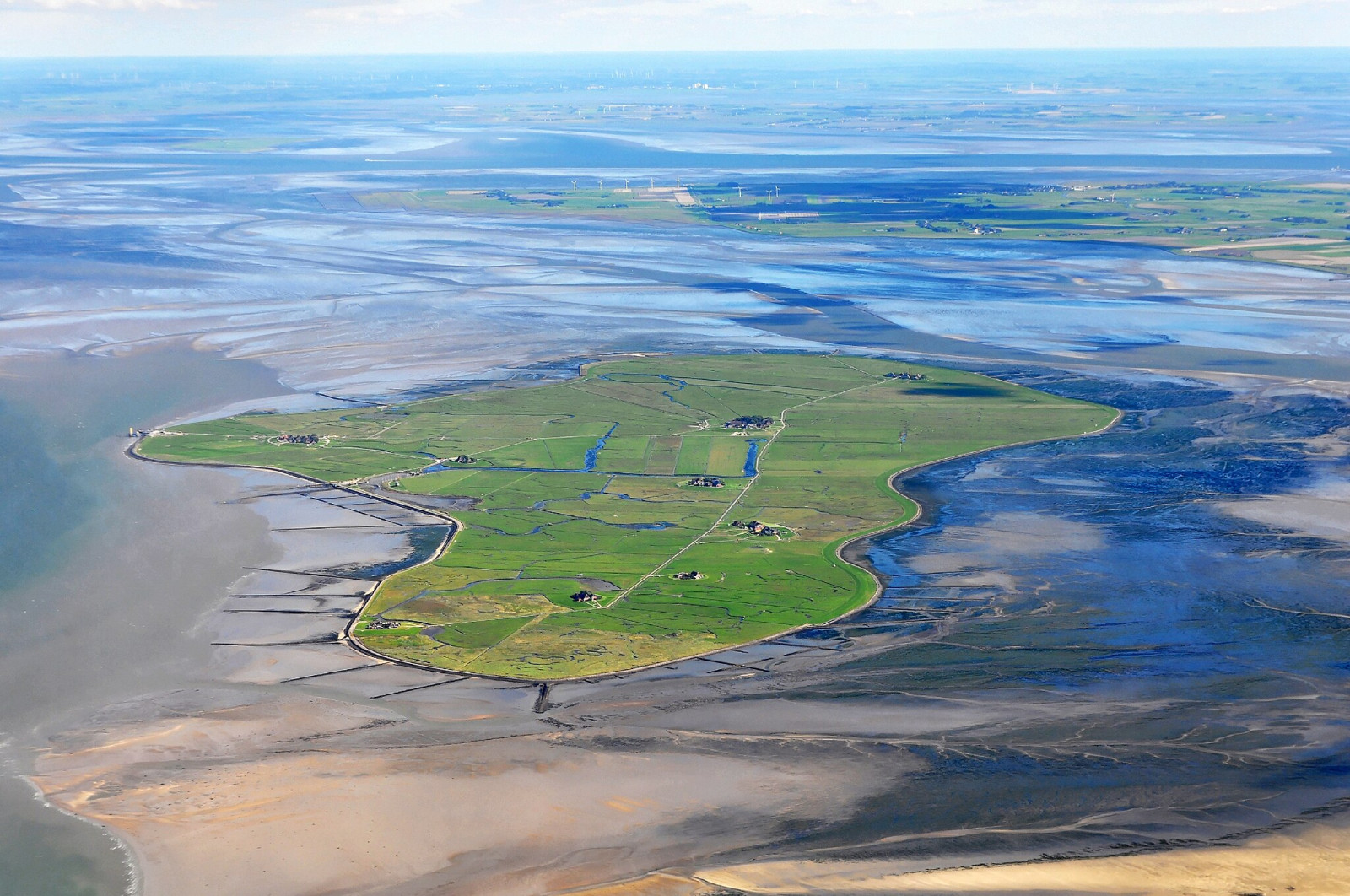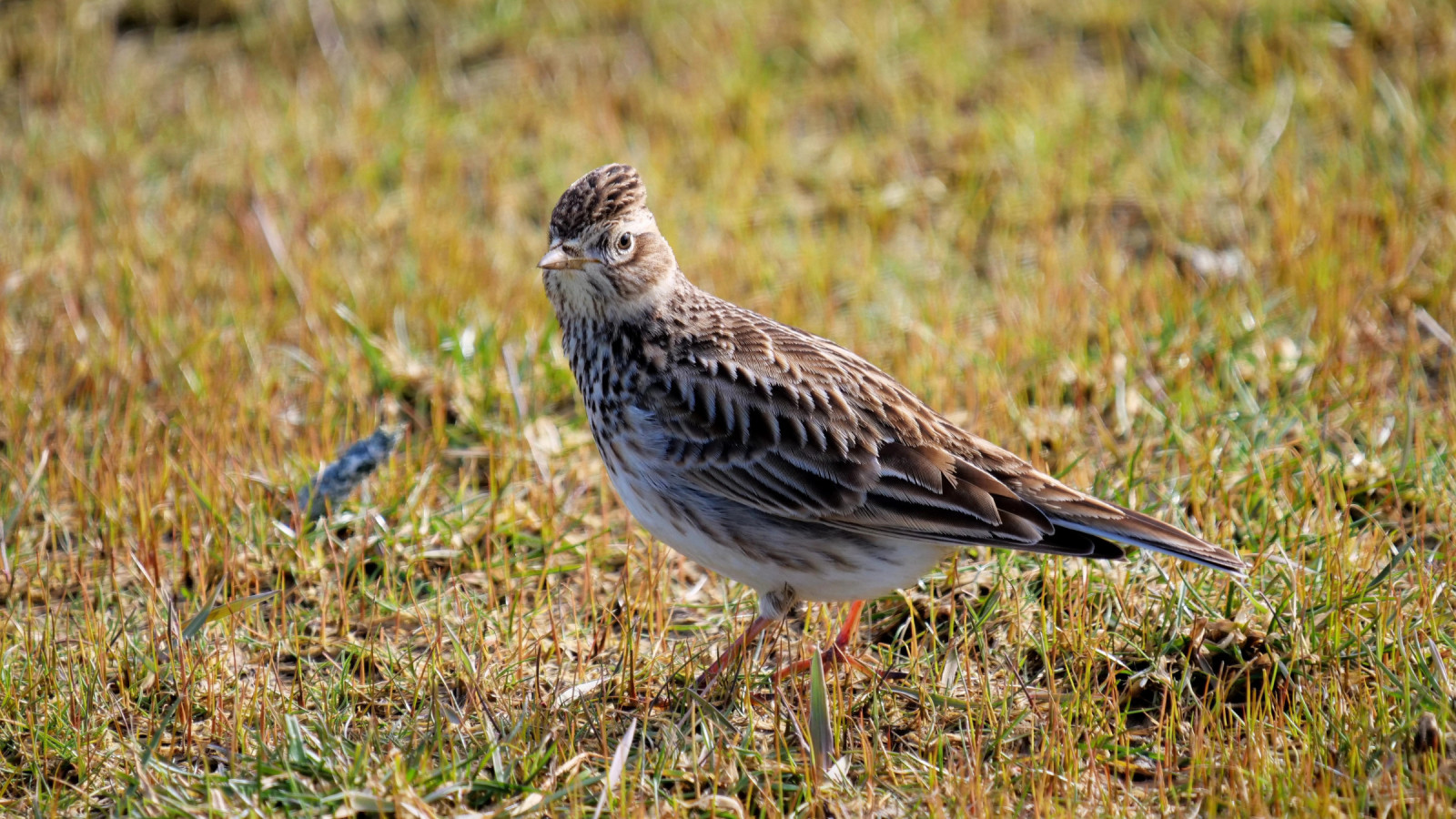Description
Hallig Hooge is characterized by large fallow areas, some of which are used for livestock farming. There are large areas of salt marsh on the east and west sides of the Hallig. While the North Sea is on the north side, large mudflats are exposed around the rest of the Hallig Hooge at low tide. Isolated hills with clusters of houses, small ponds and shrub structures allow very close observations of migrating songbirds, especially during migration periods.
On a small sandbank on the northeastern side of Hallig Hooge is a hightide roost of waders and other waterbirds. But during very high tides the entire island is used as a roost. Breeding birds include Scoicar, Fluierar cu picioare roșii and Chiră mică on the small sandbar. Other birds you can encounter are depending on the season Gâscă neagră, Rață fluierătoare, Călifar alb, Eider, Ferestraș moțat, Ciocîntors, Ploier argintiu, Ploier auriu, Culic mare, Sitar de mal nordic, Prundăraș gulerat mare, Pietruș, Fugaci de țărm, Pietrar sur, Fâsă de luncă, Chiră polară, Chiră de baltă and Chiră de mare. During migration time you can also encounter birds such as Gâscă cu gât roșu, Pasărea omătului, Fugaci de mare, Pitulice cu sprânceană galbenă, Codobatură pestriță, Capîntortură and all types of songbirds like trushes and flycatchers.
Details
Access
Hallig Hooge can be reached by ferry from Schlüttsiel (see link below). Press P on the map for directions to Schlüttsiel. The crossing from Schlüttsiel to Hallig Hooge takes approximately 1 hour and 15 minutes. Every point on the island of Hallig Hooge itself is easily accessible on foot or by bike. You can get around on foot on the Warften (small hills, including clusters of houses and bush structures), but there are also some private properties and private paths.
Terrain and Habitat
Wetland , Grassland , Scattered trees and bushes , Plain , Sea , Dunes , Pond , Mud flats , Agriculture , Reedbeds , City/villageConditions
Flat , Hilly , Open landscape , High water possibleCircular trail
YesIs a telescope useful?
Can be usefulGood birding season
All year roundBest time to visit
Spring migration , Autumn migrationRoute
Paved road , Wide path , Unpaved road , Narrow trailDifficulty walking trail
EasyAccessible by
Foot , Bicycle , WheelchairBirdwatching hide / platform
NoExtra info
Gâscă cu gât roșu Rață cu cap negru Rață neagră Rață sunătoare Gârliță mare Rață cu cap negru Corcodel mic Cuc Caprimulg Drepnea neagră Lișiță Cocor Nagâț Prundăraș gulerat mic Prundăraș de munte Fugaci roșcat Sitar de pădure Becațină comună Notatiță Fluierar de munte Fluierar de zăvoi Fluierar cu picioare verzi Lup de mare mic Pescăruș cu trei degete Pescăriță mare Cufundar mic Corb de mare Egretă mică Lopătar Uligan pescar Erete vânăt Lăcar de mlaștină Lăcar de stuf Pitulice sfârâitoare Pitulice cu sprânceană galbenă Pitulice de Himalaya Pitulice sprâncenată Siberian Chiffchaff Cojoaică de pădure Cojoaică cu degete scurte Mierlă gulerată Sturz de vâsc Pietrar sur Codobatură de munte Fâsă de stâncă Codobatură pestriță Grey-headed Wagtail (thunbergi) Western Yellow Wagtail Cinteză de iarnă Inăriță cu cioc galben Inăriță Presură de stuf Uliu porumbar Șorecar încălțat Șorecar comun Pescăraș albastru Capîntortură Șoim de iarnă Șoim călător Sfrâncioc roșiatic Coțofană Stăncuță Cioară de semănătură Cioară grivă Ciocârlie urecheată Ciocârlie de pădure Frunzăriță galbenă Lăcar mic




